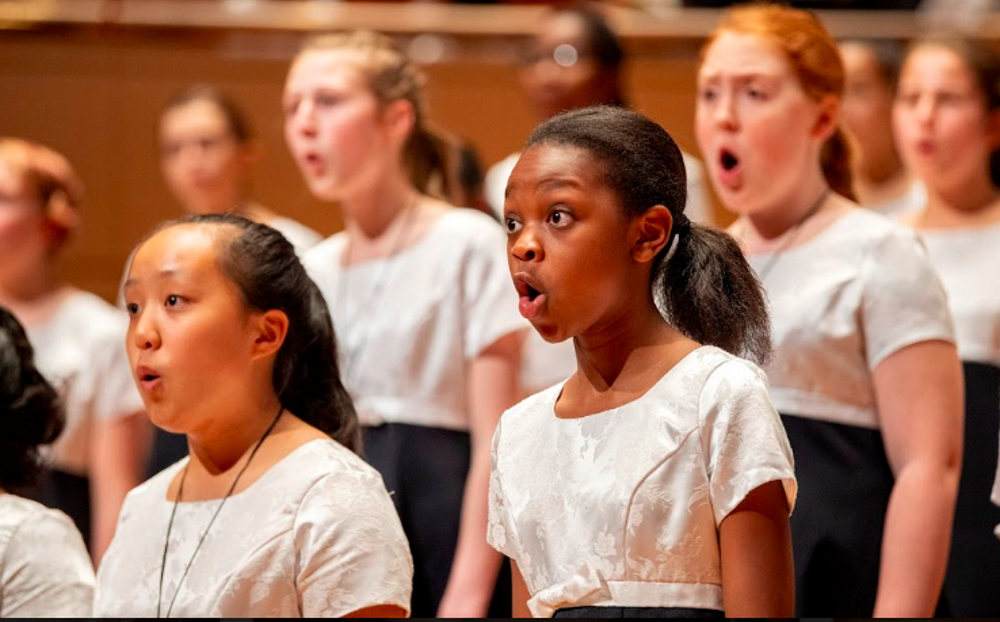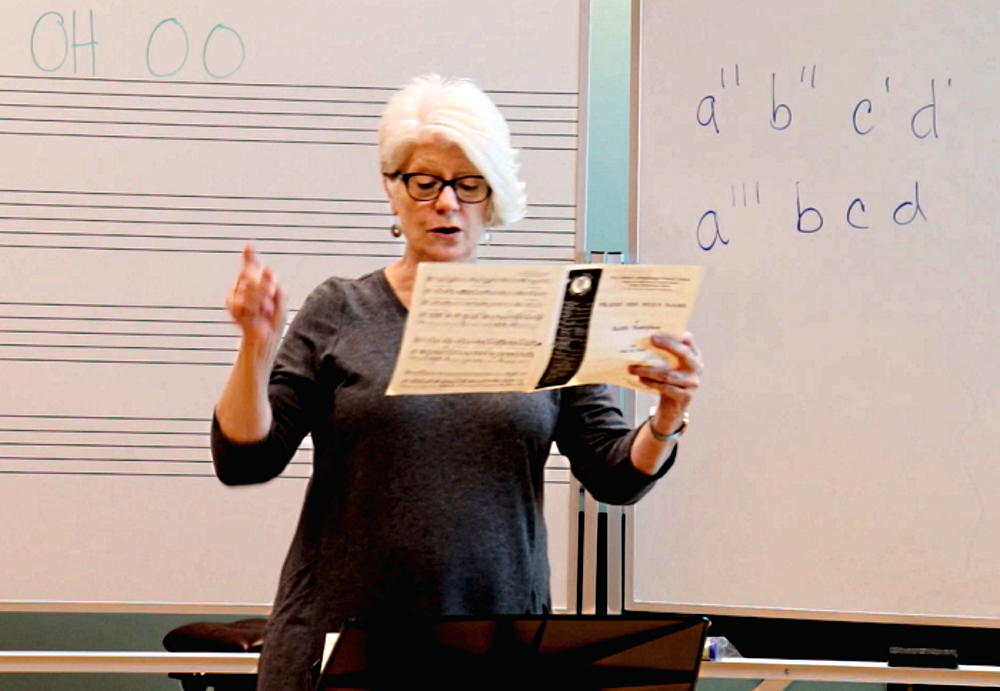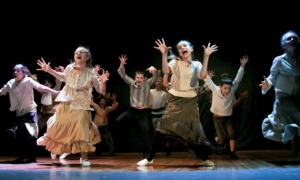
Photos by Children's Chorus of Greater Dallas
The Children’s Chorus of Greater Dallas is among 20 flourishing arts organization whose experience could be instructive to others, according to a recent report from the Wallace Foundation and the National Center for Arts Research.
When four youth choruses held a concert in Dallas last October, the audience wasn’t left twiddling their thumbs while each group walked on and off stage.
Instead, during the transitions, all eyes were on dancers performing in the interlude.
The Children’s Chorus of Greater Dallas had invited the Dallas Black Dance Theatre to entertain.
At another concert, the Children’s Chorus invited scientists from the University of Texas Southwestern Medical School to do science experiments in the interludes.
It’s an example of the organization’s wide perspective, said Megan Heber, executive director, of the Children’s Chorus.
“We’re trying to take a larger community viewpoint,” she said.
Heber is thinking about building audiences for years down the road as well as the organization’s mission of bringing choral music to young people across the widely divergent Dallas metro area.
Artistic Director Cynthia Nott came up with the idea of the interludes, which has led to larger audiences and wider community connections.
“It has opened up lots of wonderful partnerships with arts groups and science groups and Dallas museums,” she said.
In order to flourish, arts organizations need to develop not only artistic excellence, but a symbiosis with their community, according to a recent report by the Wallace Foundation and Southern Methodist University. The report pinpoints ingredients that lead arts groups to prosper and remain healthy financially — and that can also help them in the economically challenging times of a pandemic.
Artistic excellence is not enough, said Zannie Voss, co-author of the report and director of SMU DataArts at Southern Methodist University in Dallas.
What successful arts organizations do
Voss and co-author Glenn Voss, research director at SMU DataArts, analyzed arts organizations by comparing financial and operational data, including working capital, revenue diversity and community engagement. They compared performance but also adjusted for the different contexts in which the organizations were operating.
Their report looked closely at the commonalities among 20 flourishing organizations, half of which had undergone turnarounds. Their growth happened over time and in stages, it said. One common element was that leaders had a clear strategic vision that linked decisions to outcomes.
But, in practice, what does that mean?
According to the report:
A clear vision leads to some early successes that create excitement and confidence in the organization. “That first initial win shifts energy into a positive place,” Zannie Voss said. “That seems to be such a catalytic moment.”
As a result, the organization gains a clear brand, greater community support and a stronger board.
Successful activities reinforce the vision and pave the way for intermediate-term outcomes: more donors, greater capacity and increased audience engagement.
With greater financial resources, the organization then must exercise discipline and hew to its mission, the report said.
Aspects deemed critical to success are:
- mission-driven decisions throughout the organization
- a culture of respect that invites participation
- ability to adapt
- marketing and fund-raising investments
- long-term thinking.
The Children’s Chorus of Greater Dallas is among the organizations examined in the report. While the other organizations are not specifically focused on youth, some have a youth component.
A reason for existence
The Children’s Chorus has had a strong and guiding vision that is frequently referenced in meetings, Nott said — providing “opportunities to study and perform choral music at the highest level of artistic excellence, in a group that reflects the region’s ethnic and economic diversity,” its mission statement says.

Cynthia Nott, artistic director of the Children’s Chorus of Greater Dallas, says since its start 24 years ago it’s had a clear mission of bringing the experience of choral music to children across the widely divergent Dallas metro area.
The core of the organization is six choruses with a total of about 500 youth in grades 4-12 who audition and pay to participate. About three dozen students are receiving scholarships. An additional Neighborhood Chorus is free to fourth and fifth graders in the West Dallas Community School.
In addition, an Outreach Chorus goes to schools around the city to introduce students in grades three through five to the choral arts, and professional development is offered to chorus teachers.
“Dallas is a racially segregated city,” Nott said. White, Black and Latino neighborhoods are in different geographic areas; thus the chorus was based downtown “so that children from all over would come,” she said.
Students in the chorus are a diverse group, she said. Among them are kids with low incomes, kids from exclusive private schools, kids who are home-schooled. About half are children of color.
“We’ve been able to reach into different pockets [of the city] and bring everybody together,” Heber said. “This is an opportunity for them to go out of their normal networks.”
Nott has been artistic director since the Children’s Chorus began in 1997-98. She said its artistic vision has remained the same since the beginning.
Change change, change
However, organizational changes enlarged and strengthened the nonprofit, Heber said.
Seven years ago the executive director became full time, and two years ago a development director was hired. Prior to a full-time director, the chorus was “living hand to mouth,” Nott said.
On the operations side, the leaders shifted from being generalists to specialists, Heber said. Of 30 staff members, three are full time, one works 30 hours a week, and the others are part time.
Today the organization has a budget of $700,000, with contributed revenue from foundation, individual and corporate donors and earned revenue from tuition and ticket sales, Heber said.
Arts organizations face many challenges. Among them, the report mentions changing audience tastes, community population shifts, different funder priorities and shifting local policy around arts funding.
And then there are natural disasters.
To ride out the pandemic, the Children’s Chorus had to adapt quickly and keep a long-term vision, Heber said. “When you’re serving 500 children you can’t really wait til the last minute to plan,” she said.
She came up with three different budgets for the year, matching three possible scenarios: virtual, in-person or hybrid programming. In the end, the organization went virtual in its chorus rehearsal and teaching, but cancelled performances.
“It’s a planned deficit year,” Heber said. She expects earned revenue to drop 50%. The organization is supporting its deficit through a combination of operating reserves, the federal Paycheck Protection Program loan and a surplus from the fiscal year that ended June 30, she said.
The report may offer a tool for organizations struggling in the midst of the pandemic. It’s a diagnostic tool for use in both good and bad times — a framework to use to think about what elements are in place and what need to be put in place, Zannie Voss said.
She stresses that success and staying power require a community orientation.
“It requires being proactive,” she said. Organizations need to look at their expertise, see what they have to offer and ask themselves what they are going to do for the community, she said.
This story has been updated.





























